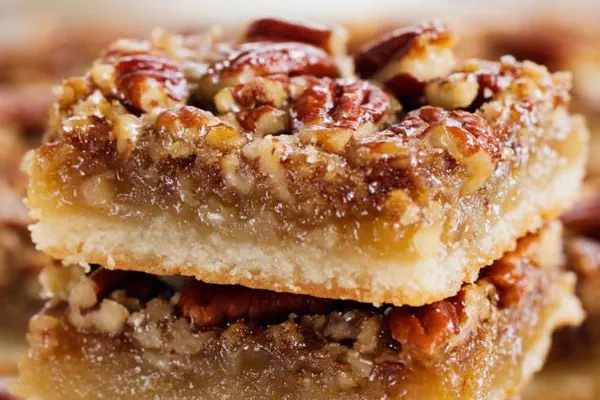Sunflower Oil Pie Dough

By Emma
Certified Culinary Professional
Ingredients
- 560 ml (2 1/3 cups) all-purpose flour
- 125 ml (1/2 cup) cold water
- 110 ml (7 tbsp) canola oil
- 1 flax egg (1 tbsp flaxseed meal + 3 tbsp water, set 5 min)
- 20 ml (1 1/3 tbsp) apple cider vinegar
- 1/2 tsp salt
About the ingredients
Method
- Mix flour and salt thoroughly in a large bowl. Feels sandy, like damp beach sand when ready.
- In separate small bowl combine canola oil, cold water, flax egg and vinegar. Don't rush mixing; liquids should emulsify, slight froth helps cohesion.
- Make well in center of flour mix; pour liquids in slowly. Use a butter knife or dough scraper to fold inward. Avoid overmixing; gluey lumps will toughen crust.
- Once shaggy dough formed, gather with hands into a loose ball. No dry cracks but no stickiness that clings to fingers. If too sticky, sprinkle tablespoon flour, not more.
- Wrap dough ball tightly in plastic wrap. Refrigerate for around 50–60 minutes. Less than an hour keeps it tender and workable.
- Prepare work surface with light dusting of flour. Roll gently from center outward; dough should spread easily but resist tearing.
- Place dough in 9-inch pie pan (23 cm). Press with fingertips up sides, patch small holes from rolling with scraps or wet fingers.
- Chilling the dough after fitting isn’t mandatory but helps minimize shrinkage during baking.
- Add chosen filling straight after shaping or keep chilled until ready. No par-baking needed unless filling watery.
- If dough cracks during shaping, pinch back together swiftly. Crust imperfections add character.
- Common mistake: overflouring the surface. Causes tough crust. Light dust, flip dough frequently instead.
- When baked, crust edges will turn golden, crisp but still tender. Scent of warmed oil and lightly toasted flour announce readiness.
Cooking tips
Chef's notes
- 💡 Start by mixing flour and salt thoroughly. Salt clumps if not well blended, ruins texture. Liquids in separate bowl helps emulsify canola oil and flax egg better. Use slow folding motion; too much handling triggers gluten toughening. Watch dough texture not clock. Sticky means add tiny flour, dry means add splash water. Dough looks shaggy but holds shape when gathered. Let rest wrapped tight. Cold but not stone-hard resist rolling pressure; dough must stretch, not crack.
- 💡 Keep water cold; warm water activates gluten too early, makes crust tough. Flax egg must gel well—unmixed flaxseed gummy or weak binding breaks dough cohesion. Apple cider vinegar tweaks gluten formation subtly. Less flour gives tenderness, more risks fragility, test by gentle pinch. Pressure when rolling outward not inward; heavy force tears crumb structure. Dust board lightly to avoid drying dough; excess flour toughens edges. Patch holes with scraps or wet finger; no gaps but no overwork either.
- 💡 Watch dough for tactile cues—feel sandy, like damp beach sand after flour mixed. Dough should not stick to fingers, no dry cracks allowed. Refrigerate wrapped tight 50 to 60 minutes; shorter rest keeps pliable, longer stiffens. When pressing dough sides in pan, patch small tears immediately. No strict timing here; dough won’t tell clocks but texture and smell. Baking smell: toasted flour and warmed neutral oil signals done. Crisp edges but crumb stays tender. Can bake with or without filling. Too sticky? Add scant flour, don’t overdo.
- 💡 Use plastic wrap tight seal to avoid drying during rest. If dough cracks during shaping, pinch back quickly. Cracks lend rustic character anyway. Rolling on silicone mat best; prevents dough sticking and tearing. Don’t skip flipping dough often while rolling to distribute flour evenly. Cracked surface dry matte means ready for filling or bake. Dough cold going into oven but flexible makes better bake, stone-hard dough shrinks more. Don’t overflour surface or dough; tough crust originates from excess flour or over mixing.
- 💡 Flax egg replaces standard egg binders; soak ground flaxseed in cold water until gelatinous; stronger than egg in binding but no flavor impact. Try oat milk but water lighter. Apple cider vinegar replaces lemon juice to tenderize without sharp vinegary aftertaste. Flour reduction explains crumb softness but observe dough feel, not timer. Roll gently with calm patience; sounds of dough stretching and faint cracking signals close to right. Flour amount not fixed; tweak while mixing for balance between fragile and tough dough.
Common questions
Why replace egg with flax egg?
Flax egg binds dough well without adding flavor or heaviness. Flaxseed gel sets structure, keeps crumbs tender. Soak properly 5 min minimum. Different from water or milk alone. Flax stronger than egg in this context; vegan friendly. No funky taste, just subtle nutty. Works well with oil to keep dough flexible.
Can I use sunflower oil instead?
Yes; sunflower oil fattier, sometimes greasy. Canola oil neutral, less oily mouthfeel for crisp crust. Use sunflower if preferred but expect slight difference in texture. Might require minor water adjustment. Oil matters for crumb softness and baking aroma. Different oils affect pliability too.
What if dough too sticky?
Add flour tablespoon by tablespoon; no dumping flour. Sticky dough risks tough crust if overfloured. Sticky indicates hydration too high or insufficient mixing. Cool dough also less sticky. Don’t rush folding or mixing; slow steps help. Sticky dough cleans fingers but no clinging. Balance moisture carefully.
How long can dough be stored?
Refrigerate wrapped tight up to 24 hours before rolling. Longer storage risks drying or crumb toughening. Freeze option possible but thaw slowly, keep covered. Dough gets less pliable if overrested. Shorten chill time to 50 minutes if pliability desired. Real talk: prepping in advance works but expect texture changes, always check before shaping.



